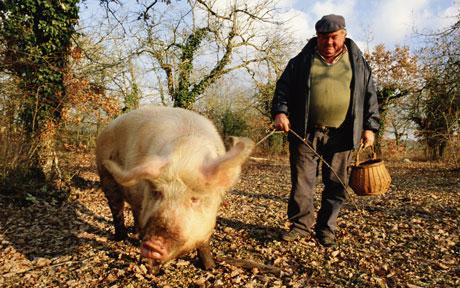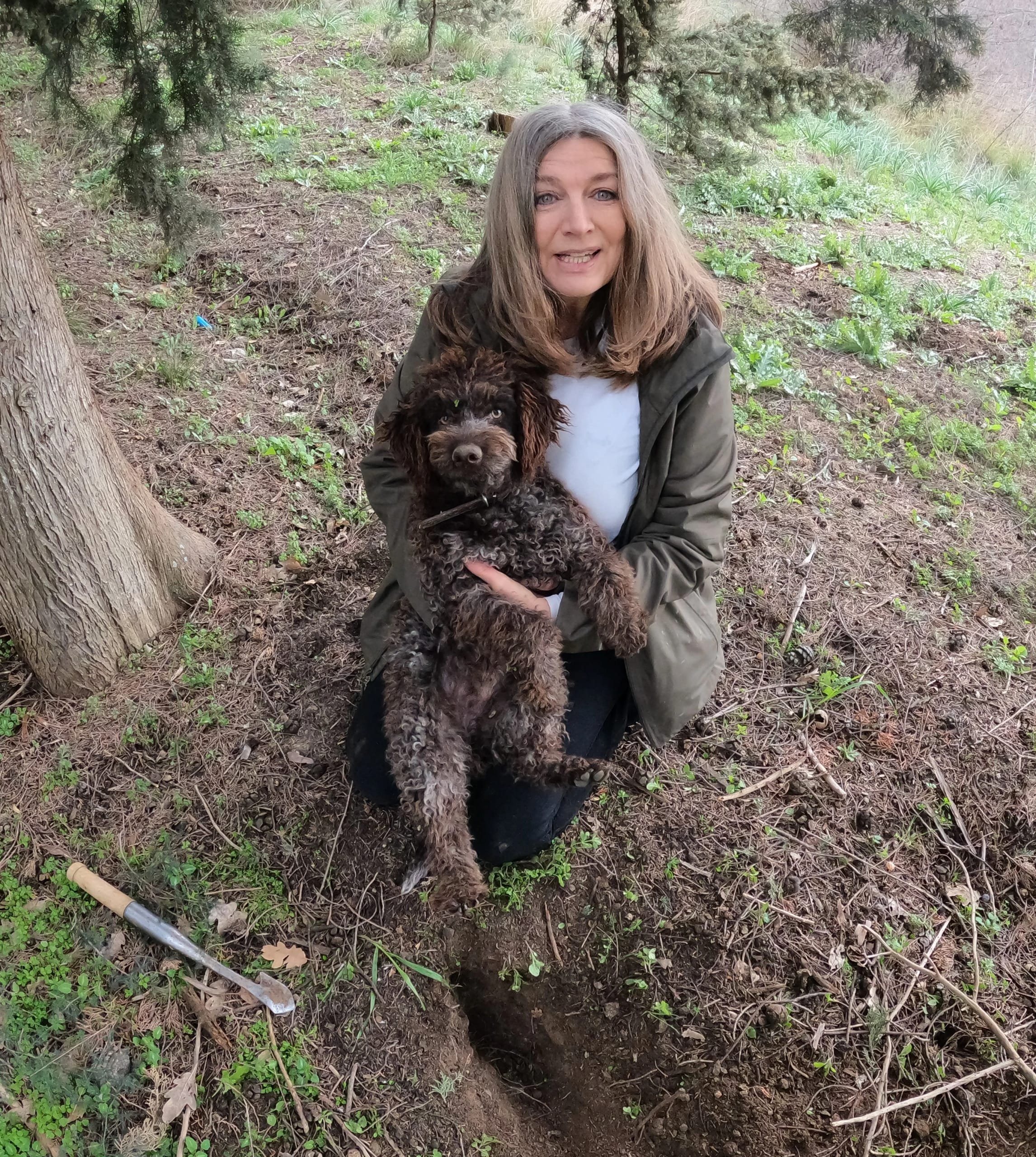
In truffle dog training you will come across the whole spectrum – different breeds from different countries and all manner of learning and hunting styles. Where the similarities seem to lie are in the problems that we have when we are training. Many of you will be able to relate to the setbacks, witnessing dogs running off, losing interest, or struggling with transitions. .
Right now, I am in the process of training Jessie, an 11-month-old lagotto. Up until last week, we really weren’t making a great deal of progress. I had started her out in the field after three months of indoor and outdoor training. Some days, we worked alone, other times she would go out with the older dogs. Occasionally she would watch those dogs as they hunted and I would try to involve her. For the most part, though, Jessie was not concerned with the truffling aspect of these trips. She spent her time in the forest running around in a state of wild excitement, trying her best to distract the more sensible dogs from their task.
Every single morning I took her out for a good run in the morning hoping this would take the edge off her excitement. Then every afternoon, we would go truffle hunting for two hours. Basically my strategy was very unsophisticated:
Be consistent
Be very persistent
Be very patient
I had no plan B so I followed my tactic doggedly, hoping that it would be enough. After three weeks, I was beginning to question myself as there was very little difference in the dog’s overall behaviour.
Then one day, Jessie simply changed tact. She jumped out of the car and whereas she usually disappeared into a nearby field, instead on this day she ran into the forest and got down to work. And that’s not all. Within a minute, she had found a large cluster of truffles totalling 700 grams. Happy times! For a moment I forgot myself and began to feel smug about solving the problem. It did ,after all, seem we had made a huge breakthrough.
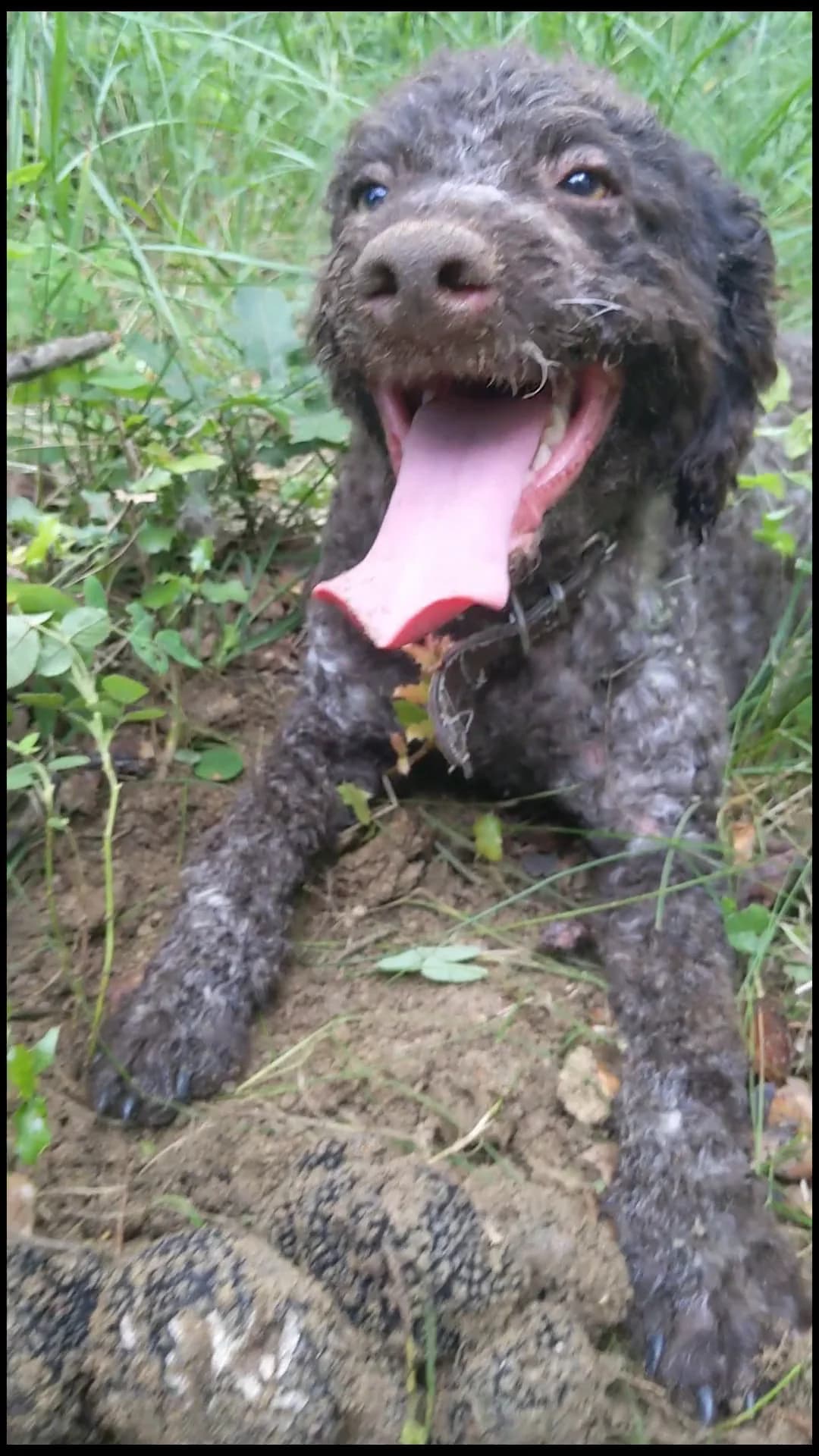
Of course, the celebration was short-lived. The very next day, we returned to the very same spot, at the same time with the same dogs. Although I had to tried to vary the scenario as little as possible, the result was entirely different. The environment had changed ever so slightly… there was a pair of goat horns on the ground. That small change was enough to entirely disrupt that day’s session. The Jessie who had given such an amazing performance just the previous day was gone. No amount of coaxing could bring that wonderful dog back. In her place was an excitable puppy who just wanted to play. And that is what she did. She ran around with the horns in her mouth for the best part of an hour, circling the other dogs, showing off her find. It was entertaining, I’ll grant you, but it was also a humbling reminder of the unpredictable nature of dog training.
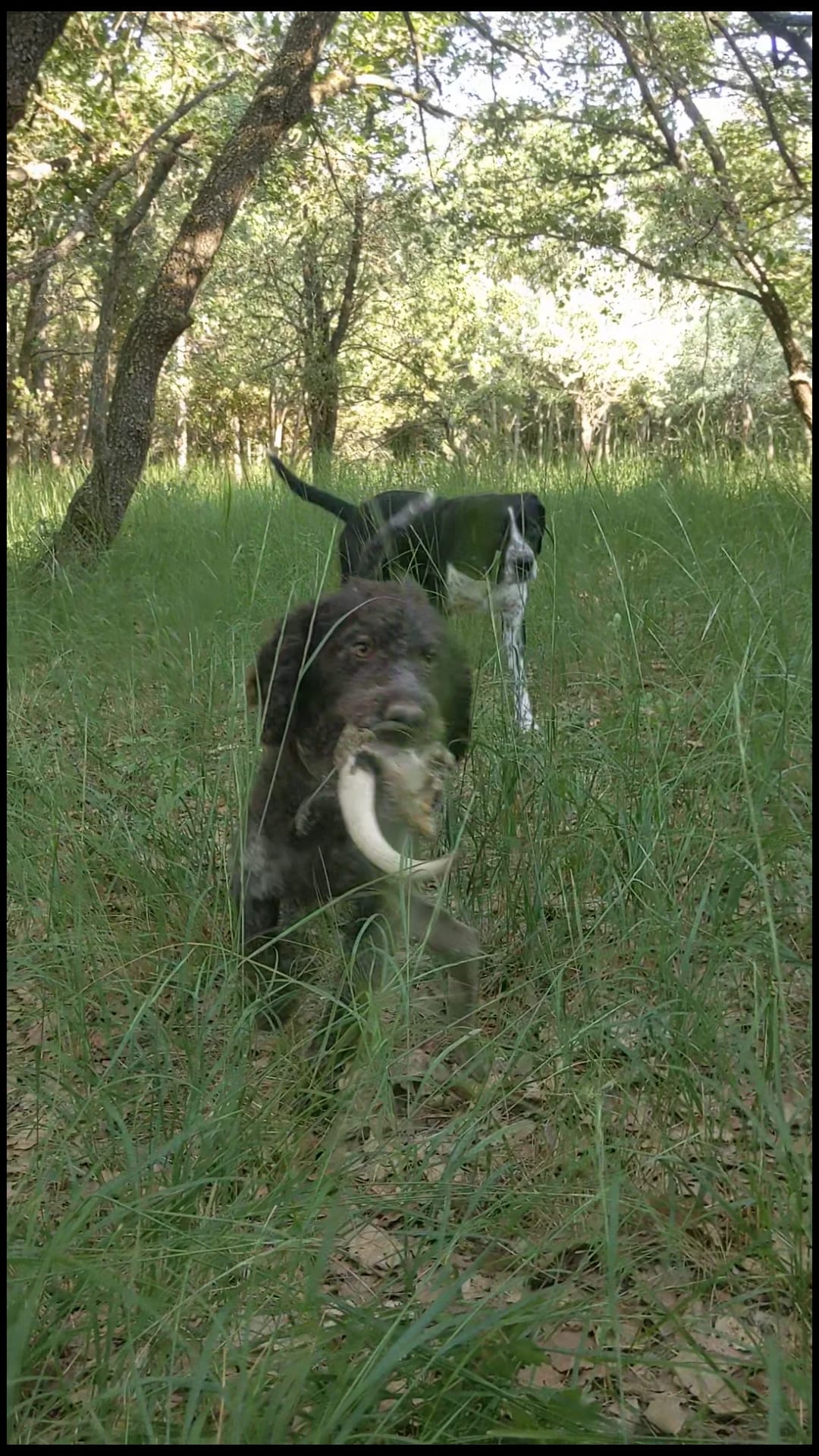
Most trainers will know this feeling of a sudden regression when you thought your dog was coming along so nicely. I know of countless truffle pup prodigies who just lost interest overnight and the confusion this causes. How much easier it would make truffle dog training if the dog would just learn the behaviour and replicate it every day from then on. In reality, the time line is a little more complicated. Whether the student is human or canine, the way we learn rarely seems to be a linear process We all go tentatively forward but then we take steps back and very often we will go around in circles. These plateaus and periods of regression are inevitable. It is simply the way of the learning curve. We can’t get ahead of ourselves in training and this can be hard as our brains seem to want to take advantage of the momentum and hurry on to the next step.
Fortunately for our impatient brains, there is more for the trainer to do more than to simply sit back and wait for the dog to move forward again. While the learning process is inherently beset with ups and downs, there are also many external factors which can cause fluctuations in the dog’s progress. It is the trainer’s job to monitor, analyse and tweak these variables. To get out of a slump, start keeping track of your dog’s behaviour.
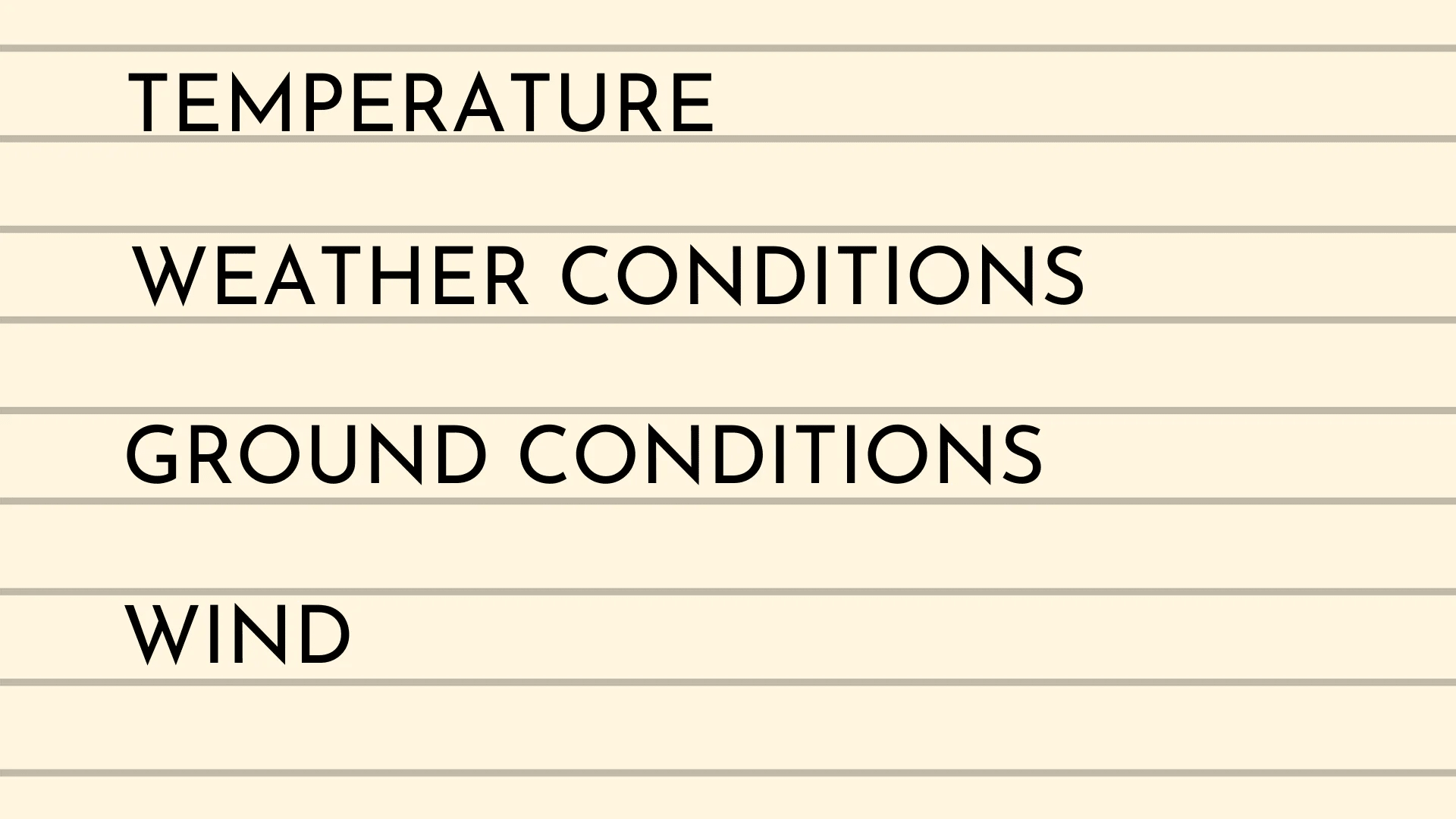
Take notes on every training session as this will help you identify which factors affect your dog’s learning. Then you can adjust your training programme accordingly.
Start by looking at timing and how that impacts performance. Humidity and temperature rise and fall over the course of the day and this affects the strength of the truffle aromas. If the scent of the truffle is weak, the task of detecting them may be too difficult for the dog. When the task is too hard, this can quickly lead to boredom which in turn leads to an unfocused dog. Experiment with the times of the day when you hunt and see how your dog responds. You should also take weather conditions into account. If the forest is very wet or if it is a windy day, it will be more difficult for the dog to pick up scents. Keep an eye on ground conditions too. Write everything down.
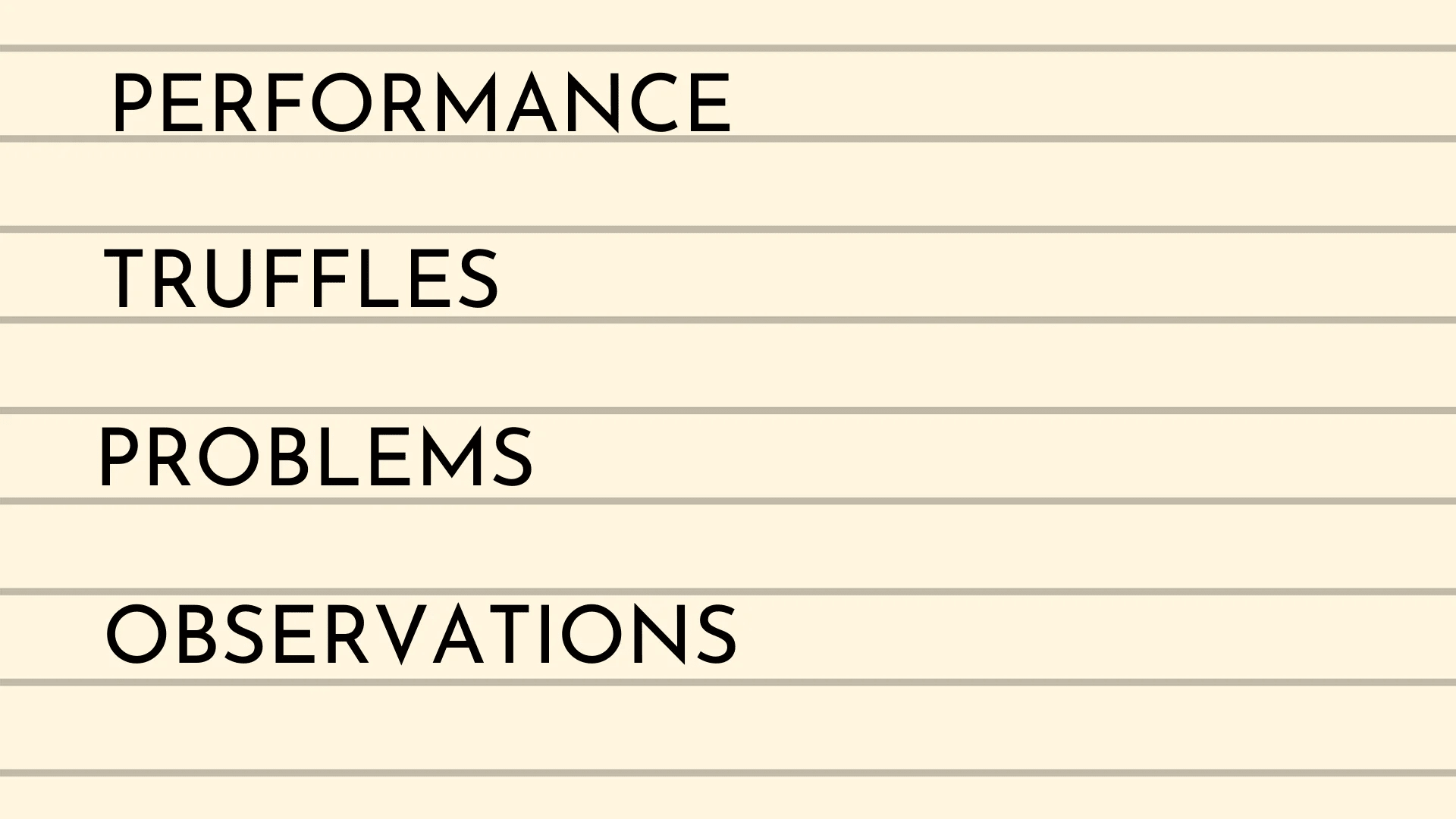
When you find a time that suits your dog, use that to your advantage. Dogs thrive on consistency and repetition,
You also need to take into account the fact that the start of the truffle season can be difficult for beginners. These first truffles are usually immature and so less fragrant. Finding these early truffles often requires an experienced nose and personally, I use this time to hone the detection skills of our older dogs. For novices, field training begins later on, when the season is well underway. When the task is manageable you will find it is easier for the dog to stay motivated.
If changing the time you train does not alter the dog’s learning, consider the dog’s mood. Dogs’ motivation levels will fluctuate, this could depend on health or their mood on any given day. Just as we experience distractions when not in the right mindset, dogs can be similarly affected. We play computer games rather than doing our taxes. Jessie plays with ram horns or barks at tortoises rather than getting down to work.
Understanding variations in your dog’s mood will help you work out how best to get them motivated. Are they less energetic at certain times of the day? Do they respond better to training before feeding? Experiment and work out which motivators enhance their engagement. Perhaps you need to rethink or raise the quality of the dog’s reward. Whatever the case, as you spend more time with your dog, you will get a better understanding of their personality and moods and use this to your advantage in your training sessions. Again keeping notes will help you recognise patterns.
As you are a team now, you need to think in terms of how you work together. You cannot separate the dog’s failures from your own behaviour and techniques. Maybe you are unknowingly affecting the dog’s mood, I often see how my own energy levels directly influence the dog. Sometimes we seem to be on the same page, other times we are totally out of synch. My feelings of boredom or frustration have an effect on Jessie, whereas if I stay objective and try to just go with it, the session is invariably more successful.
Observing and analysing and tweaking are all well and good but ultimately the key reason for the ups and downs in training is that there has not yet been enough reinforcement. In truffle training, the key is to keep doing the reps. It is through repetition that you will see the real progress. You need to be doing this really regularly if you are serious about training your dog.
In the meantime, it is up to you as the trainer to find your own motivation and to keep on going despite the inevitable hiccups. Be patient and respect the dog’s moods but be persistent. Don’t veer from the task. Keep your own motivation high by seeing the whole venture as a challenge. Get curious and clinically examine what happens during each session. By doing this, you create some distance from the emotional side of training and are less likely to succumb to the pitfall of disappointment. By being analytical you can objectively look at what you might need to change. You will keep note of factors that were different today – a good day, compared to yesterday, the day when everything went south. Were there any controllable outside influences? Paying attention to your dog’s responses helps you to tailor the training sessions to the individual dog. Don’t forget that this is one of the greatest benefits of undertaking the training yourself: you get to witness how your dog learns and get a clearer insight into what makes her tick.
As for our Jessie’s progress, she is a puppy, she is full of energy and is still in the early stages of learning, so there are good days and there are bad days. Looking at the general trajectory though, her good days are on the rise. I continue to follow my basic strategy, keeping notes on our daily sessions and making small adjustments where necessary. I have realised it makes more sense to lean into her personality, rather than try to rein her in entirely. And this works well with my ultimate goal: for Jessie to see hunting as her main source of fun. To get the balance right can be somewhat tricky, as this fun needs to be the controlled kind, not the crazed, bounding-off over-the-hills sort of fun. The first step though is easy, it is simply to be clear about what you are aiming for. Any lack of clarity about your goal will confuse your dog.
As Jessie and I are spending more time together, we are becoming more in tune. Training has become more enjoyable, There are fewer moments of frustration and I start to see how now she wants to please me, how she waits for me to come out of the forest like she is checking I am ok. There is a sense of the dog that she is growing into and a sense that pretty soon everything will fall into place.




